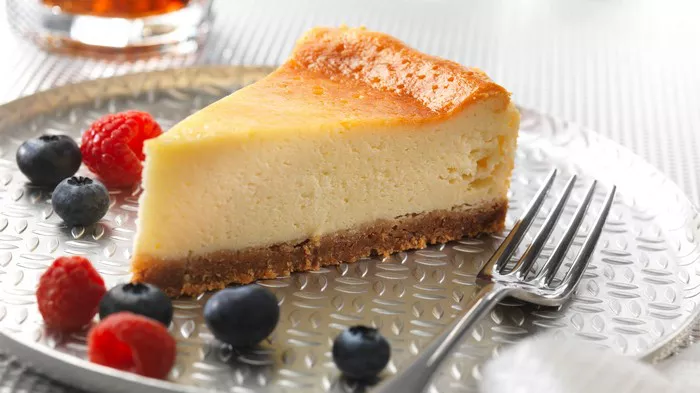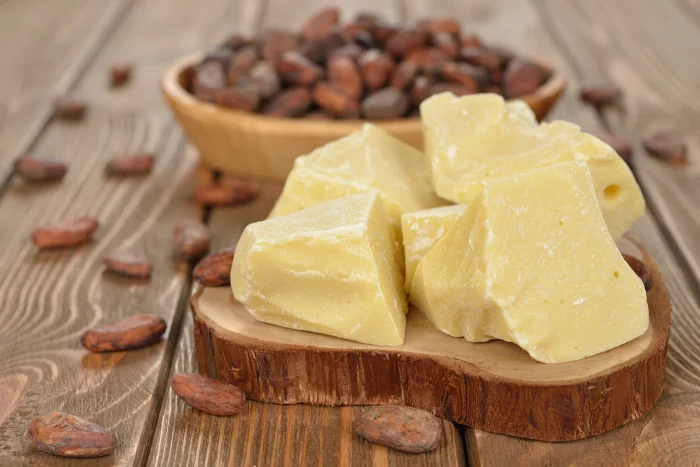Cheesecake has long been a beloved dessert enjoyed across cultures and cuisines. But what exactly is it? If you’ve ever pondered whether cheesecake is a pie, you’re not alone. The debate about its classification has stirred up some interesting discussions among food enthusiasts. To understand whether cheesecake is a pie or not, we need to take a closer look at its ingredients, preparation method, and the broader definitions of pies and cakes.
The Basics of Cheesecake
A cheesecake is a dessert consisting of a crust and a filling, typically made from cream cheese, sugar, and eggs. It’s often flavored with vanilla, lemon, or other ingredients. While cheesecake might sound like a cake, it’s notably different from traditional cakes in its texture and composition. The filling is smooth and dense, in contrast to the light and fluffy texture of cakes.
Cheesecake can be baked or made as a no-bake version, where the mixture is set in the fridge rather than cooked in the oven. It’s typically served chilled, which further distinguishes it from most cakes.
What Defines a Pie?
A pie, on the other hand, generally refers to a dish that consists of a pastry crust that holds sweet or savory filling. The key characteristics of a pie are:
Crust: A pie always has a bottom and often a top crust, made from pastry dough.
Filling: The filling can be made of fruit, cream, custard, or savory ingredients, depending on the type of pie.
Baking: Most pies are baked, although some, like cream pies, are not.
Pies come in various forms, but the key features are the pastry crust and the way they are assembled. Even when pies have no top crust, as with a traditional open fruit pie, they still retain their pie classification due to the presence of a bottom pastry crust.
The Case for Cheesecake as a Pie
While cheesecake may not have a pastry crust in the traditional sense, it does share some key features with pies. These similarities lead some to argue that cheesecake could be classified as a type of pie.
Crust as a Key Element
The crust is one of the defining components of a pie, and cheesecake does have one. Although the crust of a cheesecake is typically made from crushed cookies (often graham crackers or digestives) or sometimes a simple biscuit base, it still acts as the foundation for the dessert in the same way a pie crust would.
In some cases, cheesecakes even feature a top layer that’s similar to a top pie crust. For instance, some cheesecakes might be topped with fruit or a layer of jelly, similar to how some pies are finished with a fruit topping. In this sense, cheesecakes incorporate elements of a pie, especially in their structural design.
Filling Consistency
Both pies and cheesecakes are filled with creamy or custard-like fillings. While a pie filling might be made of fruits, nuts, or chocolate, a cheesecake filling is made primarily from dairy products like cream cheese or ricotta, along with eggs and sugar.
The texture of a cheesecake is dense and creamy, and this is somewhat similar to the rich, smooth filling in custard pies. Some argue that if pies can have a variety of creamy fillings, cheesecake could be considered just another variation of pie.
No-Bake Cheesecakes
In addition to baked cheesecakes, no-bake cheesecakes also exist. These types of cheesecakes don’t involve baking the filling but rather allow it to set in the refrigerator. This resembles the preparation method for some cream pies, where the filling is made and chilled, but the crust is baked.
The fact that no-bake cheesecakes are set using a cooling process rather than an oven process blurs the lines even further between pies and cheesecakes.
The Case Against Cheesecake as a Pie
Despite some obvious similarities, there are several reasons why cheesecake does not fit neatly into the category of pie.
The Type of Crust
While both pies and cheesecakes can have a crust, the key difference lies in the type of crust used. A traditional pie crust is made from a dough consisting of flour, butter, and water. This crust is usually flaky and buttery, whereas a cheesecake crust is typically made from crushed cookies or biscuits, resulting in a firmer, denser texture.
The texture of the crust in a cheesecake is much more similar to that of a cookie than to the flaky pastry dough typically associated with pies. This distinction is often used to separate pies from cheesecakes.
The Filling
Cheesecake’s filling is also quite different from the typical pie filling. A classic pie filling is made of fruits, custard, or cream, whereas cheesecake filling is made primarily of cream cheese and other dairy products. The texture of a cheesecake filling is dense and smooth, almost like a mousse or a pudding. Traditional pie fillings, however, can vary in consistency, from the chunky texture of fruit pie fillings to the smooth texture of custard pies.
This difference in texture leads many to classify cheesecake as a cake rather than a pie, as its filling bears more resemblance to a cake batter than to a traditional pie filling.
The Cake vs. Pie Debate
In the broader culinary world, cakes and pies are often viewed as distinct desserts. Cakes tend to have a light, airy texture, and are made with a batter or dough that rises during baking. Pies, on the other hand, are usually more structured with a crust that holds a filling.
Cheesecakes, while dense, don’t have the airy texture that most cakes have. In fact, cheesecakes are often compared to custard-based cakes, like flans or soufflés, rather than to traditional pies.
The method of preparation for cheesecake also leans more toward cake-making than pie-making. Pies are typically baked with a crust, while cheesecakes are often either baked with a filling or chilled to set the filling. This difference in preparation style further complicates the argument that cheesecake is a pie.
Cultural and Regional Differences
In some regions, the debate over whether cheesecake is a pie or a cake is more nuanced. For instance, in some European cultures, cheesecakes are considered a type of torte, which is a type of cake. The traditional German Käsekuchen (cheese cake) or Italian Ricotta cheesecake follows a similar formula to many cakes and tortes, but it is distinctly different from what many Americans consider a cake.
In other parts of the world, particularly in the United States, the question of whether cheesecake is a pie often arises due to its appearance and texture. In the U.S., pies and cheesecakes are both served as celebratory desserts, yet the differences between them are widely acknowledged.
Final Thoughts: Is Cheesecake a Pie?
Ultimately, the answer to whether cheesecake is a pie depends on how you define “pie.” While cheesecake does share some features with pies, particularly its crust and creamy filling, it also has significant differences that set it apart.
Cheesecake’s thick, dense filling, the use of cookie crumbs for the crust, and the absence of a traditional pastry dough all suggest that cheesecake is more of a hybrid dessert—one that can’t be strictly classified as either a pie or a cake.
Some people might consider cheesecake a pie due to its crust and structure, while others may argue that its unique filling and preparation process make it more akin to a cake or custard dessert. In the end, it may not matter too much whether cheesecake is classified as a pie, a cake, or something in between. What’s important is that it’s delicious and enjoyed by millions around the world.
Whether you think of it as a pie, a cake, or something entirely new, there’s no denying that cheesecake holds a special place in the world of desserts.
Related topics:



























